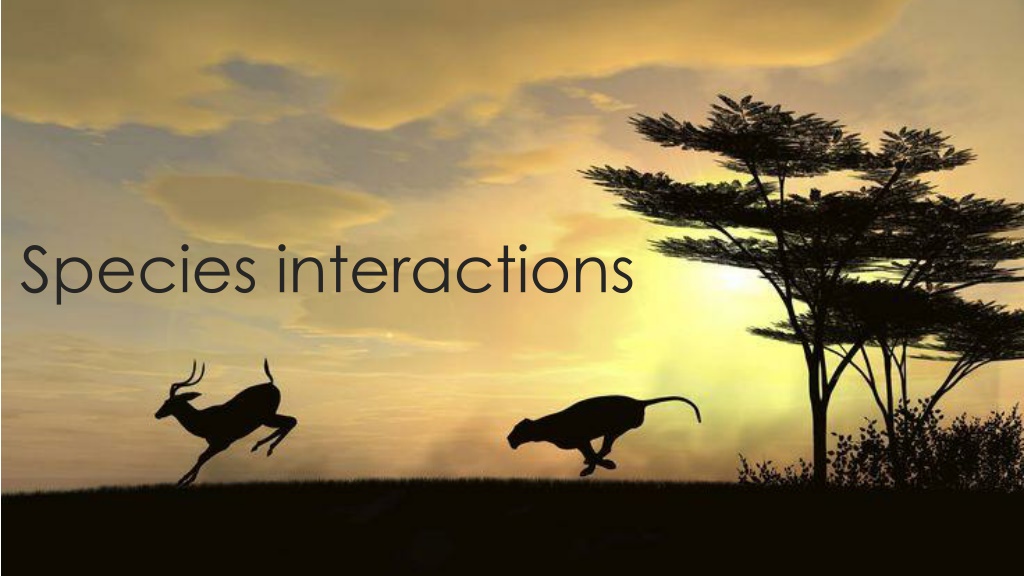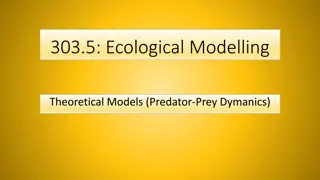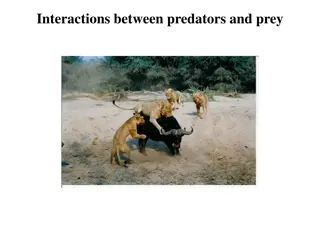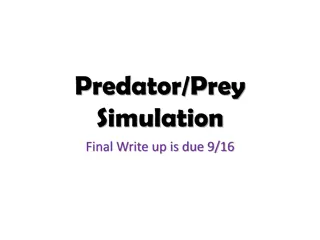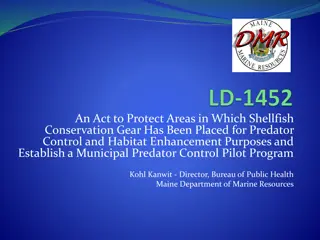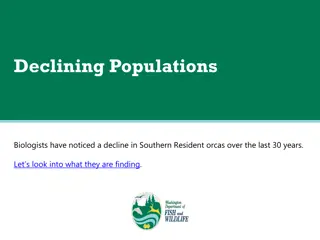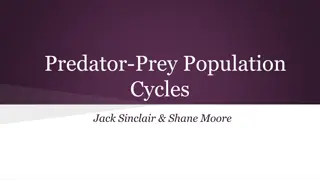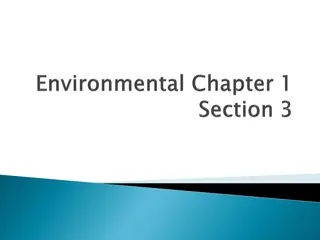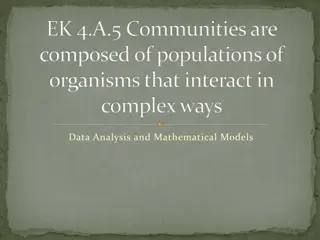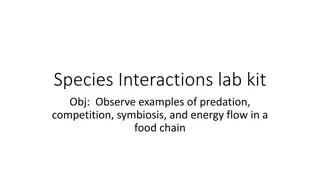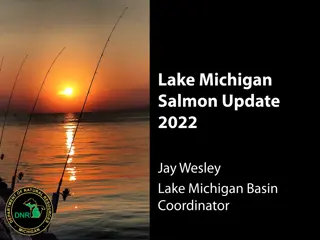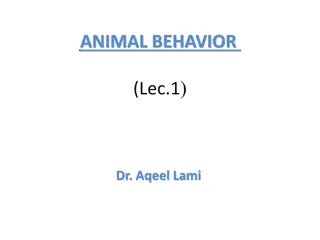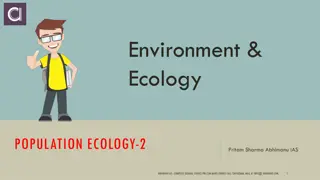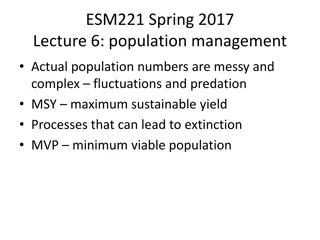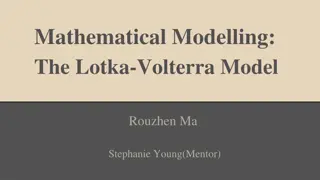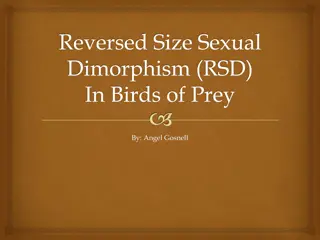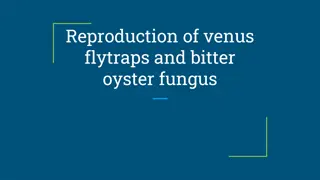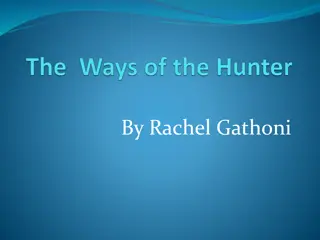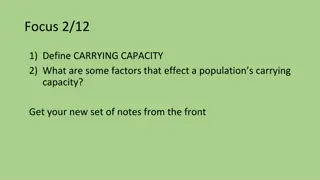Understanding Species Interactions and Predator-Prey Dynamics
Species interactions refer to the associations between different organisms that can be positive or negative, influencing the growth and evolution of populations. Predation is a key interaction where one organism hunts and feeds on another. In predator-prey dynamics, populations fluctuate in a cyclical manner, with the predator population lagging behind the prey population peak. This cycle is crucial for the survival of both species.
Download Presentation

Please find below an Image/Link to download the presentation.
The content on the website is provided AS IS for your information and personal use only. It may not be sold, licensed, or shared on other websites without obtaining consent from the author. Download presentation by click this link. If you encounter any issues during the download, it is possible that the publisher has removed the file from their server.
E N D
Presentation Transcript
What do we mean by species interactions? Interaction (between species) refers to positive and negative associations between species that favor or inhibit mutual growth and evolution of populations. It may take the form of competition, predation, parasitism, commensalism or mutualism. In nature no species exists in total isolation all organisms interact with both the abiotic environment and other organisms. If two species interact directly within a shared environment, they share a positive association (they co-exist). If interactions within an environment are mutually detrimental to both species, they share a negative association (do not co-exist).
Positive Associations : Predation (+,-) : Predation is a biological interaction whereby one organism (predator) hunts and feeds on another organism (prey). Organisms use their senses to locate objects and their prey. Some predators are : fast enough to catch their prey. Some hide and lie in wait. And some inject chemicals to paralyze their prey.
Predatorprey graph This population data comes from fur trapping records. How are the populations linked?
How does the lynx population depend on the number of snowshoe hares? snowshoe hare 150 Take a closer look at this part of the graph. estimated population size lynx (thousands) 100 50 0 1800 1820 1840 time (year) 1860 1880 1900
Why does the peak for the lynx population always come after the peak for the number of snowshoe hares? snowshoe hare 150 estimated population size lynx For the populations to survive, there will always be more hares than lynxes. (thousands) 100 50 0 1850 1855 1860 1865 time (year)
Predatorprey cycle Predator and prey population sizes follow a cycle. What happens if the prey population increases? normal prey population prey population increases prey population increases predator population decreases as less food predator population increases as more food prey population decreases because of more predators
Predatorprey cycle Predator and prey population sizes follow a cycle. What happens if the prey population decreases? normal prey population prey population decreases prey population decreases predator population decreases as less food predator population increases as more food prey population increases because of less predators
Predation continued Some prey may escape their predators by: Camouflage Outer protection Chemical warfare Warning coloration Mimicry Deceptive looks Deceptive behavior
Coevolution Some species interact so intimately that they can cause evolutionary changes in each other over time. This is called coevolution. when one species develops an evolutionary advantage, it triggers a change in a closely associated species. This change may then cause another evolutionary change in the first species, and both species will continue to evolve in response for each other in a phenomenon called Evolutionary arms race . Evolutionary arms race : The levels of defense and counter-defense will continue to escalate.
Coevolution and Predator / Prey Arms Race Moth vs Bat case study : Bats are nocturnal animals and use echolocation by ultra sonic sounds to locate its prey the moth . Over time the moth formed an adaptation to avoid being located by the bats by developing its own auditory sensory organ known as tympanal organs. By hearing the bat s echoes the moth could either escape, emits its own echoes to warn the bat that it is not the desired moth toxic . A species of moths took this to whole new level and started to emit its own ultrasonic sounds that jam the one emitted by the bat.
Coevolution and Predator / Prey Arms Races case study Predator and prey: tiger moths of the species Bertholdia trigonia fight bat echolocation with ultrasonic noise of their own.
Herbivory, a special case of predation or NOT! herbivory involves the taking of plant material by an animal herbivore- is almost always non-fatal, and can sometimes be an advantage for the plant- or at least stimulate growth and promote community diversity. Herbivory generally becomes a problem when the ecological system is out of balance. E.g., invasive insects (gypsy moth)- or the loss of predators (white-tailed deer)
Herbivore-plant relationships also can evolve into an arms race Plants evolve armor (thorns, spines, prickles), toxicity, implant cells with silica, and sometimes symbiotic relationships to defend foliage.
Plants evolve thorns, animals evolve morphology and behavioral techniques to avoid thorns. Plants get taller, change canopy structure, animals get taller.
Positive Associations : Symbiotic Relationships Symbiosis describes the close and persistent (long-term) interaction between two species Symbiotic relationships can be obligate (required for survival) or facultative (advantageous without being strictly necessary) Symbiotic relationships can be beneficial to either one or both organisms in the partnership: Mutualism (+,+) Both species benefit from the interaction. Commensalism (+, 0) One species benefits, the other is unaffected. Parasitism (+,-) One species benefits to the detriment of the other species.
Mutualism (+,+) In mutualism, two species interact in a way that benefits both of them. Most organisms benefit through mutualistic interactions by gaining nutrition or protection. Mutualism could be : Obligatory : The interaction between termites and the microorganisms in their digestive system. Facultative : Mutualism between acacia trees and ants.
Mutualistic coevolution Moths and Orchids case study : A species of moth called the Morgan's sphinx has a proboscis, or tongue, that is three times its entire body length. The flower is called a Darwin's orchid, and its nectar is stored at the bottom of a really long tube. The flower needs the moth for pollination, and the moth needs the flower s nectar. So the flowers tube gets longer overtime to ensure the moth touching the flower so the pollination would occur, in response the moth s tongue will grow longer as well to reach the nectar.
Mutualistic coevolution Mutualistic coevolution between the moth and the orchid
Commensalism (+,0) Commensalism is an interaction that benefits one species but has little, if any, effect on the other species. For example, the relationship between cattle egrets type of birds and the African buffalo. cattle egrets follow herds of large hoofed mammals and they eat the insects that have been stirred up by the buffalo as they move.
Parasitism (+,-) Parasitism occurs when one species feeds on part of another organism. Although parasites can harm their hosts, they can promote community biodiversity. Some parasites live inside the host (microorganisms, tapeworms). Some parasites live outside the host (fleas, ticks, sea lampreys). Some have little contact with host (cowbirds : they lay eggs in another s nest and let them take care of it s young.)
Parasite / host Coevolution Myxoma virus vs European rabbits case study : European rabbits were introduced into Australia in the 1800s. In the absence of parasites and predators they multiplied rapidly causing destruction to native vegetation. When the myxoma virus was introduced into Australia in 1950 to control rabbit populations and it killed 99.5% of the population in about 2 to 3 weeks. Since the rabbit population decreased drastically, a coevolution occurred and the virus that was less virulent favored by natural selection. As a result, rabbit population started to increase and in response to the virus, it developed immunity.
Parasite / host Coevolution The great numbers of the European rabbits
Negative Associations : Competition (-,-) : Competition describes the interaction between two organisms whereby the fitness of one is lowered by the presence of the other Competition can be intraspecific (between members of same species) or interspecific (between members of different species) Limited supplies of resources (e.g. food, water, territory) usually triggers one of two types of responses: Competitive exclusion : One species uses the resources more efficiently, driving the other species to local extinction Resource partitioning : Both species alter their use of the environment to divide the resources between them
Competition Interspecific competition : is the competition between member of two different species. The result is that neither species can obtain as many resources as they could in the absence of the other species. Intraspecific competition : is the competition between member of the same species. This also includes the competition for mates.
Evidence for Competitive Exclusion. A famous experiment by the Russian ecologist, G.F. Gausse demonstrated that Paramecium aurellia outcompetes and displaces Paramecium caudatum in mixed laboratory cultures, apparently confirming the principle. (Interestingly, this is not always the case).
Exploitation does not always cause the exclusion of one species. They may coexist, with a decrease in their potential for growth.For this to occur, they must partition the resource. Species that share the same habitat and have similar needs frequently use resources in somewhat different ways - so that they do not come into direct competition for at least part of the limiting resource. This is called resource partitioning.
Example of Resource Partitioning One of the best known cases of resource partitioning occurs among Caribbean anoles. As many as five different species of anoles may exist in the same forest, but each stays restricted to a particular space: some occupy tree canopies, some occupy trunks, some forage close to the ground.When the brown anole was introduced to Florida from Cuba, it excluded the green anole from the trunks of trees and areas near the ground: the green anole is now restricted to the canopies of trees:the resource (space, insects) has been partitioned among the two species
How Can Natural Selection Reduce Competition between Species? Populations of some species competing for the same resources develop adaptations through natural selection that allow them to reduce or avoid such competition. The competing species evolve to reduce niche overlap. By for example resource partitioning. Through natural selection, the fairly broad and overlapping niches of two competing species can reduce their niche overlap by becoming more specialized
How Can Natural Selection Reduce Competition between Species? Each species minimizes competition with the others for food by spending at least half its feeding time in a distinct portion of the spruce tree and by consuming somewhat different insect species.
How Can Natural Selection Reduce Competition between Species? Genetic variation and specialized feeding niches can lead to evolutionary divergence. Each species has a beak specialized to take advantage of certain types of food resource. Use shared resources at different: Times Places Ways
